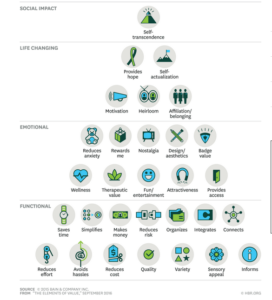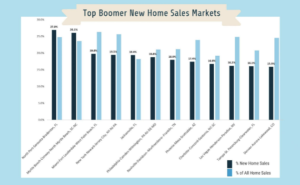Each Monday we bring you the top mature marketing stories that had people talking, commenting and sharing. While it’s not Monday (we hope you had a wonderful Labor Day), we didn’t want to leave our loyal visitors missing even one week of insights. This week we explore the differences in how people view emoji usage, the top markets to which Boomers are gravitating and 30 needs you should try and tap into to make your marketing effective. As always, please be sure to share your thoughts below.
MOST CLICKED
Emoji Etiquette: I admit it, I’m an over emoji user… and I need help. It’s true — in my personal life I send a multitude of texts to friends and family using a wide range of emojis. Thanks to an article summarizing a recent study exploring how different generations use/define emojis, I may have to rethink my usage. The study looked specifically at teens and their use of emojis; the author then took it a step further and asked Boomers and Seniors their take on the same ones.
For example, the blushing smiley face actually conveys polite romantic refusal. “She glosses it as ‘Hi. Um. Not interested. Sorry? Sorry!,'” Mary H.K. Choi, writer for Wired, explained. “This was news to my crack team of old-person emoji decoders (age range mid-20s to 40s), who use the blushing smiley mostly to express that they are ‘flattered’ (but not in a romantic context), ‘smug’ or ‘satisfied.’”
I had no clue!
The article went on to highlight some of the more regularly utilized emojis and the different interpretations. For marketers — I know it may be eye catching and “hip” to leverage the emoji craze for your clients — but be sure you know how your target market understands them before you do… or you could be in trouble.
 Your Consumers Have Needs: In fact, they have 30 “elements of value” that drive their purchase journey. A recent study by Bain & Company defined four core categories that they believe help shape the needs that play into consumer decisions.
Your Consumers Have Needs: In fact, they have 30 “elements of value” that drive their purchase journey. A recent study by Bain & Company defined four core categories that they believe help shape the needs that play into consumer decisions.
These categories include:
- Functional
- Emotional
- Life Changing
- Social Impact
The article summarizing the study reiterated that it’s not critical to check off each and every one of the 30 needs in your positioning to be successful. We couldn’t agree more. The most important thing to note for those targeting the mature consumer (or anyone for that matter) is knowing who your target market is and what primary needs they have. Some might be anxious about making a move/downsizing and others might be excited, looking for a senior living solution that allows them to become part of a community. Your positioning and messaging needs to be relevant to those core needs.
MOST SHARED:
Top Markets Attracting Boomers: Speaking of needs, one of our most shared articles this week focused on the needs of Baby Boomers… housing needs. More specifically, how they may need to move to a new home as they enter retirement.
Just 62% of homes are single-story homes; only 45% of Baby Boomers describe their home as being easy to maintain and upkeep; and only 27% have accessibility features for those with special health needs, according to metro study. Many more Baby Boomers may have to end up moving.
 Senior Housing News identified the top markets to which Boomers are migrating. Not surprisingly, Florida was on top of the list, followed by locations with more forgiving climates (read: mild temps). For builders and marketers targeting active adults within these market areas, the sky is the limit when it comes to positioning yourself within a desired location and addressing how your homes/products can help live well and age in place.
Senior Housing News identified the top markets to which Boomers are migrating. Not surprisingly, Florida was on top of the list, followed by locations with more forgiving climates (read: mild temps). For builders and marketers targeting active adults within these market areas, the sky is the limit when it comes to positioning yourself within a desired location and addressing how your homes/products can help live well and age in place.


